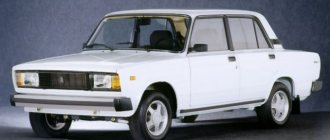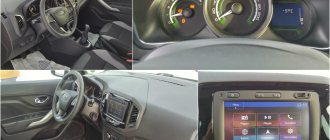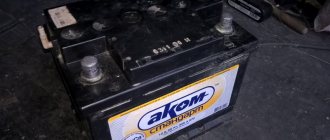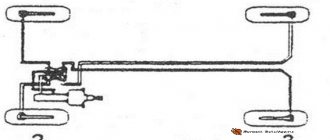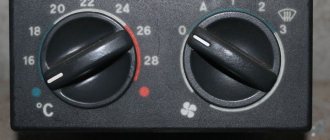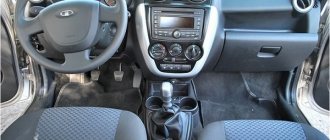The engine is one of the most important elements in a car. It is the design of the engine, its characteristics and reliability indicators that motorists put at the forefront when choosing a car. Nowadays, in addition to engines, other elements are important, such as electronics, gearbox and chassis, but with the development of disassembly and qualified repair services, these elements are increasingly fading into the background. Availability of spare parts and availability of repairs affect. Motors still remain the most complex part in a car, especially when it comes to domestic cars. Therefore, in our article we will analyze in detail the entire family of Lada Xray engines.
general information
On Lada Xray models, engines are available in three variations, but their general design is similar: gasoline inline four-cylinder units, with 4 valves per cylinder (16 valves in total) and two camshafts.
True, this is where the similarities between the engines end. Considering the general characteristics of the Lada Xray, the engines installed on the model provide good power and torque, which is quite enough for everyday city use. Let's take a closer look at which engines are equipped with x-rays and what are their main differences. However, before this it is worth mentioning that not all car models and trim levels are equipped with domestic power units. It will not be a secret for advanced car enthusiasts that new Lada models are created on the basis of the B0 platform. And since AvtoVAZ assembles models using Renault-Nissan technologies, many engineering solutions are borrowed from these manufacturers. The motor in this case was no exception, so AvtoVAZ installs the Nissan engine on the Xray in some trim levels.
The news about the appearance of the X-ray with a Nissan engine inspired many fans of the brand, since VAZ engines have never been distinguished by excellent quality and reliability. And now there is an alternative, a massive and reliable one. The Nissan engines with which AvtoVAZ equips new models have long been known among car enthusiasts, since the origins of the creation of this unit date back almost to the beginning of the 2000s.
The model of this power unit is H4M, which is essentially a converted version of the Nissan HR16DE engine. This unit appeared on the market in the early 2010s and during this time has proven itself well among servicemen and owners of Renault Sandero, Logan, Duster, etc. Since 2015, full-scale production of the Lada X Ray with Nissan engines began, although the name of the engine itself was changed to N4Mk.
The displacement of the N4Mk engine is the classic 1.6 liters, and the power of the Lada X Ray with a Nissan engine is 110 hp, and the torque varies at around 146-148 Nm. Structurally, the H4Mk is an aluminum cylinder block and an aluminum cylinder head. The valves in the cylinder head are located on classic mechanical pushers, and the timing mechanism is carried out through the use of a chain in the design. There are two camshafts in the head, and there is a phase regulator on the intake shaft. The fuel injection system is electronic, with two injectors per cylinder.
The xray with the H4Mk engine has proven itself well over the years. The engine is reliable and maintains its service life of 200+ thousand without any problems, taking into account regular maintenance and careful operation. Of course, we can’t do without sores:
Review of VAZ 1.6 110 horses H4 Nissan (2016)
Yesterday, guests came to visit me in three cars, one of them was the most expensive, the cost of such a car is 700 thousand rubles. I got it for 650 thousand, but with the obligation to undergo 3 maintenance in this service, where I got it.
Top prestige equipment, maximum.
I drove 10 km on different roads, accelerated to 140 just for fun, and drove on a dirt road.
I open the hood of the 1.6 Nissan H4 engine, aluminum block, without hydraulics. The location of the components is good, everything is tight and smart, on the Qashqai there is more space and more comfortable, but there are 2 liters and a larger hood. And filling the washer fluid is located on the right side, it’s done in an awkward way, you won’t fill the generator or any contact. It's clean under the hood.
The appearance from the front is not bad, from the side it is worse, and from the back it is tacky. Standard DRLs shine a little dimly, but on Hyundais or Nissans or Volkswagens they shine brighter. On par with the Opel Astra and its half-eyelashes. In dim or dirty weather, definitely turn on your headlights or fog lights.
The door handles are comfortable, both outside and inside. They did it wisely.
The seats are amorphous, optimal for 180-185 and 90-100 kg. More will be cramped, less will be spacious. But there will be chatting anyway.
I turn the key and the music starts playing. Music - It's shit, like on a Nissan with 4 speakers, in our Qashqai it's just shit. Change definitely, even if you are picky.
When I start it, it’s a foreign car. No shaking, instant start, quiet, stable engine operation. Dashboard. I don’t understand why they didn’t transfer it from Nissan; it would have added to the charm and quality of the car. A C grade. Why this greenery is so miserable - I don’t know. Consumption shows instantaneous and average.
The climate control is good, it doesn’t reach the level of a good Qashqai system or an excellent BMW system, but I can already assure you that it will be enough for 95% of owners. The only thing is that the blowing direction is not shown on the screen and the adjustment progress is 1 degree, and the climate itself is 1-zone.
The air vents in the center are closed - well done designers!
The plastic is hard everywhere, it will rattle a little, but overall it’s fine.
The seats are smaller in width than in the Qashqai, at the Vesta level. There is not enough space in length, behind me, 167, you can sit with a height of 185, but if I get tired and throw the back back, then my knees will inevitably touch me, behind a man of 185 height, my knees will inevitably touch me, or I’ll even have to sit with a brace. Not serious. Why did they make a tunnel in the back - okay, Europeans have their tolerance, selfishness and other individuality, where they don’t like to rub against each other and secretly save money from all-wheel drive versions to mono. But why this is on a front-wheel drive car is unclear.
Russian VAZ, if I’m not mistaken, has not yet released a single all-wheel drive vehicle. They are content with the Soviet field.
The steering wheel is normal, it seems to be the same as on the West, if I'm not mistaken. Nice. The electric-hydro amplifier, like on a business class, is more difficult to turn on the spot than on an electric car, much like on a Cruise. There is little adjustment, only up and down.
The gas tank flap was designed by an idiot; it does not open from the passenger compartment like on any car. It doesn’t close at all, I threw it back and turned it away. They finally wrote 92 petrol on the hatch. Especially for those who like to spend more and contaminate the engine with additives, designed for 92 gasoline by designers.
The ground clearance is slightly lower than that of the Qashqai, the overhang angles are slightly shorter, and the cross-country ability in terms of gullies is the same.
The trunk is normal, deeper down than the Qashqai, longer than the Lifan, but narrower.
So, on the go. I repeat, there is a 1.6 engine with 110 horses, like on the Tiida/Sentre, phase shifters, a chain motor that is maintenance-free up to 200 thousand. Just change the oil every 15. Adjusting the valves, changing the belt - all this is not necessary, this alone reduces the cost of operation and increases the reliability of the machine. The gearbox engages a little more tightly and worse than on the Tiida when switching, I don’t know - due to the intervention of crooked craftsmen who changed the gear ratio or due to the lack of development due to the new car. Reverse gear also requires waiting or double squeezing, why can’t it be done like on a box of Bavarian origin - always from the 1st time, I don’t understand. This infuriated me, and it would have infuriated me here too, being the owner of an X-ray. But it’s better than the West with its super-modified, wretched, loose and noisy VAZ gearbox. In neutral it's all chirping, no play, tactile vibration is only up to 10-15 degrees of the engine, there is no visual vibration.
Let's plug in 1, the clutch pedal is a bit weak, the gas pedal is excellent, you can't be afraid to give it a boost, the anti-skid system levels it out, the dynamics are excellent, faster than on a Qashqai and much faster than on the same Lifan or Logan. This is an excellent engine that allows you to drive at 1600-2000 rpm, switching to 2400-2800. Engine noise insulation is excellent, better than in the West, as well as less noise coming from the road. You can turn the engine up to 3500-4000, the gears are long, in 3rd gear you can go from 35 to 70 comfortably, in 2nd you can accelerate to somewhere around 85, on the Tiida the cutoff was about 70. In 5th gear at my cruising 85 - 2500 rpm, quite normal, quiet, wind noise is present, but not at all loud, on the same viburnum it is much noisier. At 100 km per hour - 2900 rpm, at 110 - 3100, at 140 - 3700, it is already noisy and the car floats, up to 110 the stability is not bad. Consumption at 85 km per hour - 5-5.2, at 95 - 5.5, at 110 - 6.5, at 130-140 - 7.5-7.8. More than on the Prior, but less than on the West. Although the car's ground clearance is higher.
The wheels are 16, like on a foreign car 205x55, so it goes through small potholes much more pleasantly and quietly than nondescript and childish r14s, you can slip over recumbents, it also handles deep potholes decently, medium depth and crushed stone is significantly better than a Qashqai, but the Sanderik will be more stable and quieter nonetheless.
The brakes are well made, the brake pedal operates informatively.
Steering - well done here, a breakthrough, I don’t know, the reason for this is the b0 base, which is on the micra, laptop tiida, centra. But finally, in a VAZ car, you can let go of the steering wheel and it will drive along the highway, the steering wheel returns on its own, you drive relaxed, you avoid the potholes, everything is done perfectly, this is the level of the best C-class, may rusmar forgive me, the same cruise lags behind in the absence of tension on the road.
But the suspension itself is a bit soft and the stability is rather weak, it’s better on the West, and also on the Sandero. That is, the steering wheel exceeds the theoretical capabilities of the chassis. You can immediately see the intervention and adjustment of the suspension towards bad roads. You will quickly get used to it, you may not even notice it if you haven’t driven different cars. But the Priors go through the rings much better, the body is stiffer. And obviously, the doors or trunk will open while standing on a hillock, unlike the cotton viburnum-2.
There are only two airbags, five headrests, and the front seat belts are adjustable within a normal range. There are no side curtains or curtains - not serious.
Overall, a strong four plus. This is already a good car, you feel confident in it. Plus a proven power unit, gearbox, and chassis bogie. I can already say like Hancock: “Well done.”
If you take a new Mazda 3 for 950 thousand. Now I looked, the price starts at 1080, but on the machine. Let’s put 90 thousand down to 900 thousand, then it wins only in terms of safety, lensed low beams (if I’m not mistaken, even in the base they are like that), more comfortable seats, significantly better stability due to the thoughtfulness and multi-link, and better aerodynamic noise after 90 km at one o'clock. But the difference is 200 thousand. It will have a condo, only 95 gasoline, lower ground clearance, will not have heated seats, will not support MP-3, will have significantly worse dynamics, will not have heated headlights or navigation. On Penza roads, I would definitely choose the X-ray, I was pleasantly impressed.
Another drawback I’ll note is that the engine takes longer to heat up and cools down faster than the VAZ engine. A winter blanket and cardboard are a must.
Which engine is better for the Lada x Ray Cross?
Engine 21129 is used for the basic configuration of the new Lada and has significantly lower performance compared to the VAZ-21179. In particular, the fuel economy indicator.
Experts advise taking a closer look at the more expensive xRay options. After all, by paying an additional 39,000 rubles, you can save significantly in the long term. If the car is actively used, then these costs will pay off even faster. In addition, it is much more pleasant to drive a more dynamic car model.
Fans of mechanics should pay attention to the 122-horsepower engine, here the surcharge will be 64,000 rubles from the budget version. But this cost includes not only a more powerful engine and automatic transmission, but also more rich functionality of multimedia systems. It is also expected that this particular power unit will be installed on the budget version of the all-wheel drive Lada XRay Cross.
An important factor in choosing an engine for a car is the cost of its maintenance. Auto News calculated that servicing a Lada xRay Cross with a Nissan H4M engine after passing all maintenance will cost 38,000 thousand rubles more. It is to reduce the maintenance of X Rey that AvtoVAZ limits their production with an imported engine.
Engine Lada X-ray 1.6 liters
This power unit is an adaptation of the VAZ 21127 engine known from Priora to EURO 5, that is, a distant relative of the 21083 unit. There is, of course, an increased displacement, a new cylinder head with a pair of camshafts and hydraulic compensators, an intake tract of variable length, as well as an absolute pressure and air temperature sensor instead already outdated mass air flow sensor.
The main problems of this engine are the short service life of the pump, oil wastage, tripping when cold and often bursting coolant expansion tanks.
The Lada.online portal talks about the characteristic features of this internal combustion engine.
At first, the Lada Xray was equipped with a power unit from Renault-Nissan with the H4Mk index, well known from a number of models of the Franco-Japanese concern. This aluminum engine with a timing chain drive and a phase regulator on the intake shaft does not have hydraulic compensators, so it is necessary to periodically adjust the thermal clearances of the valves.
In the summer of 2021, the French-Japanese internal combustion engine with the H4M index returned to the model range due to the installation of the Jatco JF015E variator on the X-RAY. Its power was increased to 113 hp. and 152 Nm.
The list of typical malfunctions of this power unit cannot be called too long. The only things we can remember are problems with starting in severe frost, a slight waste of oil and a delicate ignition unit relay, as well as rapid wear of the engine mounts and the alternator belt.
Hatchback before restyling 2015 - 2019
| 1.6 l 21129 MKP5 | 1.6 l H4M manual gearbox5 | |
| Type | injector | injector |
| Fuel | gasoline AI-92 | gasoline AI-92 |
| Location | transverse | transverse |
| Cylinders | 4 in a row | 4 in a row |
| valves | 16 | 16 |
| Working volume | 1596 cm³ | 1598 cm³ |
| Power | 106 hp | 110 hp |
| Torque | 148 Nm | 150 Nm |
| Acceleration to 100 km/h | 11.4 s | 11.1 s |
| Speed (max) | 176 km/h | 181 km/h |
| Ecological Class | Euro 5 | Euro 4 |
| Consumption city | 9.3 l | 8.9 l |
| Flow track | 5.9 l | 5.6 l |
| Mixed flow | 7.2 l | 6.8 l |
The difference in maintenance costs for internal combustion engines of Renault and VAZ was calculated on the Auto.Vesti website
Xray with VAZ engines
AvtoVAZ decided to please potential X Ray buyers and released several new engine models:
Let's look at these Lada X-ray engines and figure out which one is better, more reliable and more economical. So, the origins of power units 21129 and 21179 begin with the release of VAZ models of the 10th family. The general design of the engines has not changed much since then: displacement from 1.4 to 1.6 (and for 1.8 on unit 179) with 4 valves per cylinder and two camshafts, timing mechanism - belt, fuel type - gasoline.
With each new VAZ model, engineers refine these engines, trying to find the optimal balance of power and reliability. Since there are no fundamental changes in their design, in terms of maintainability, everything is excellent with these motors. Now on the market there is simply a myriad of parts for these power units.
New image of AvtoVAZ
Even when he was the president of the domestic automaker, Bo Inge Andersson tried to ensure that the new products created at his instigation - Lada X-Ray and Lada Vesta - had as little as possible in common with previously produced models. After all, only the lazy did not kick VAZ products, since the quality really left much to be desired. And the emotions from the car were not the most rosy.
And, as it turned out, the Swede managed to break the “traditions” that no one could overcome for years. The new sedan and hatchback can compete well in their segment even with the market leaders, and in some aspects they are noticeably better. The assembly has become an order of magnitude better quality, there are no more strange noises or squeaks, and the handling of the cars is in complete order.
The stylish X-Ray looks much more attractive than previous AvtoVAZ models!
About Lada X Ray engines
Lada X Ray is a small crossover from AvtoVAZ, created on the B0 platform (Renault Duster, Sandero, etc.) and produced since 2021. This car, despite the appearance of a small jeep, has a front-wheel drive suspension. The goal of the Lada X Ray is to conquer part of the market in the fairly well-known and growing section of small crossovers.
Rivals of Lada Lada X Ray: Renault Duster/Sandero, Nissan Terrano, Hyundai Creta, Cherry Tiggo, Great Wall M4, Geely MR Cross and other similar SUVs.
Like all the latest models from Togliatti, X-Ray received the newest engine. In fact, the car is equipped with 2 engines - the first is from Lada Vesta, a 1.6-liter unit 21129. The second is a Nissan HR16 (H4M) engine, which is a more expensive option, but the displacement is the same as on the Russian engine of 1.6 liters. The more high-torque Lada X Rays are equipped with 1.8 liter 21179 engines, the power of which reaches 122 hp.
CAR.RU will tell you about X Ray engines, what makes them stand out, tell you about the main difficulties in maintenance and the reasons for various problems. And of course, about the technical properties, service life, required oil and replacement frequency. Let's touch on the topic of engine tuning, how to increase power without reducing the engine's service life.
Engine 21179:
The engine uses the entire cylinder block from Priora 21126, 197.1 mm high, with a slightly improved cooling system and an oil channel for the phase shifter. Pistons supplied are 82 mm and 26.7 mm high, a crankshaft with a piston stroke of 84 mm, connecting rods of 128 mm. The weight of the connecting rods and pistons is approximately the same as the 126th engine. Assembling the engine with these parts made it possible to obtain a working volume of 1.8 liters. A modified cylinder head 21126 was placed on top, with a new gasket installed. For the first time, a variable valve timing system was used on the intake camshaft. The adjustment range is 30 degrees, the camshafts themselves are hollow and lightweight. Enlarged intake and exhaust valves were installed, the diameter of the intake valves was 31 mm, the exhaust valves were 28 mm, and the stem diameter was reduced to 5 mm. This head received improved cooling, modified channels with valve springs.
The engine control unit for the M86 has been changed, an electronic throttle valve, high-performance injectors, a modified oil pump, a modified oil pan, and, of course, a new pump and exhaust manifold have been installed. The 21179 motor uses a regular plastic intake manifold without changing the length. All these engineering changes added an increase in power and torque across the range - 122 hp. at 6050 rpm, torque 170 at 3750 rpm. The timing drive uses a toothed belt; it is advisable to replace the belt approximately every 90 thousand km. Engine 21179, when the belt breaks, the valve bends, like other recent AvtoVAZ engines: 21127, 21129, etc. Unfortunately, due to the low mileage of vehicles with the new engine, we do not yet have information about critical problems. But the editors of CAR.RU are closely monitoring this engine and will definitely add information when we receive it.
“Ideal” Lada Xray Cross with a Nissan engine: we were in the owner’s shoes for a month
Lada Xray was created on the Global Access platform of the Renault-Nissan concern - this is no secret to anyone. At one time, the project of the Russian version of the car on the Logan/Sandero “trolley” might not have happened: they say that Bo Andersson, who was then in charge of VAZ, insisted that this car be made just like that. What I mean?
Evgeniy Lipovitsky
Lada Xray Cross AT. Price: from 846,900 rub. On sale: from 2021
I've ridden various versions of the Xray about ten times over the last three years. There were regular manual versions, and a contradictory combination of a peppy 1.8-liter engine and a leisurely AMT robot. The version of Cross shown a little over a year ago interested me with renewed vigor: I believe that Steve Mattin has not yet drawn anything better for our autogiant. And now, just four years after its debut, Xray has received a version that I can call truly harmonious.
The crossover (namely, it should be classified in this class) received a reliable Nissan 1.6 engine and - oh, heavens, really - a CVT. This is a major milestone both in the biography of a particular model and in the history of the entire VAZ. Finally, Tolyatti residents offer a comfortable, modern car that is pleasant to look at (especially for me) and pleasant to drive for those who do not like three pedals under their feet. I am exactly like that. In my opinion, a manual transmission nowadays is only justified on heavy-duty track cars. If you need to control the traction yourself and the lap time depends on this. In other situations, the MCP is an atavism.
And now the “ideal” Xray is at my disposal for a month. During this time, it is quite possible to get into the owner’s shoes. I used the car in average mode: the daily routine route home-edition-home and weekend duty trips to shops and the market.
The manual mode of the variator is activated by a lever; there are no paddle shifters on the steering wheel.
The two-pedal version does not shine with dynamics. Due to the settings of the accelerator and gearbox, the passport 12.3 seconds of acceleration to hundreds are stretched in the mind at least three times. And no matter how proud VAZ is of the settings of the Jatco variator, which can switch virtual, that is, fixed, gears, the problem of all “continuously variable” gears in the Xray Cross AT is fully manifested: the engine howls, presses on the ears, and the acceleration seems to have been sent by someone “ Russian Post”... There is a speed increase, but you’ll have to wait.
If you press the long-stroke gas pedal almost to kick-down, the algorithm for changing the gear ratios of the V-belt transmission clearly changes - you can already keep up with the flow. So he rode, pumping the trigger like a bicycle pump. And I got used to it in a couple of days. And even caught several fines for exceeding the limit!
The first couple of weeks I thought that the electronic fuel gauge was lying: from the first day the scale showed a full tank, and so it continued. But no, the consumption of the gasoline engine of “Japanese citizenship” was less than 8 liters per 100 km. Quite within the bounds of decency, I think.
The ground clearance of the Cross version of Xray is 20 mm higher than the standard one.
Several times, when I was accelerating on the empty Moscow Ring Road in the evening, I caught myself thinking that I was driving “not bad”: at highway speeds the Xray Cross is very stable, and the rather heavy steering wheel transmits into the palm of my hand exactly as much information as I need for peace of mind and confidence. True, I would replace the upholstery of the steering wheel: this eco-leather is very reminiscent of tarpaulin in texture, and when the steering wheel has to be turned intensively - in a parking lot, for example - it’s not far from the driver’s blisters.
I’ll continue to grumble: the upholstery of the front seats, which are quite well shaped, looks... not so branded. More like cheap Chinese cases from the market in Kuntsevo. It's the same problem at the back. The standard seats look neater, but in the Cross version the technologists clearly weren’t able to play with different textures and fabrics.
As for the rest... Not a bad car, I must admit. For the money, it seems to me, very much so. A completely normal multimedia system, good sound from the speakers (even the bassy electronics sounded quite decent), and in terms of ergonomics, I would take a couple of guys from Renault by the scruff of the neck, put them in the Xray and sternly ask why their Logans and Dusters less room for knees, for example? The most “packed” version of the Prestige has a heated steering wheel - this is generally my favorite option, and I use it not only in winter.
The neck of the washer fluid reservoir is located just below the windshield.
Operating costs
| Vehicle mileage during the test | 1250 km |
| Average fuel consumption | 9 l/100 km |
| Maintenance intervals | 15,000 km / 12 months. |
| Cost of maintenance at an official dealer (TO-1/TO-2) | 7900/11 100 rub. |
| The cost of compulsory motor liability insurance for this car | 5257 rub. |
| Cost of comprehensive insurance for this car | RUB 21,597 |
| Transport tax | 2825 RUR/year |
| Cost of 1 km taking into account mileage of 20,000 km per year | RUB 6.94/km |
The editors recommend:
What kind of antifreeze can be added if the class of the fill is unknown
Isuzu will bring the Japanese UAZ to Russia
The Russian car market has hit the bottom, but dealers do not want to reduce prices
The new GOST has given the traffic police a free hand: there is now no escape from cameras
Discussion Cancel
I want to receive the most interesting articles
Innovations Lada xray with VAZ-21129 and VAZ 21179 engines
Among the innovations that significantly separate the 129 engine from its predecessors, it is worth mentioning the presence of a technological intake system. For the first time in the history of AvtoVAZ, designers have developed and mass-produced intake manifolds with variable intake geometry. This system works as follows: at low speeds, air from the filter enters the engine along a long path, thereby ensuring optimal operation of the internal combustion engine. At high speeds, a mechanism installed in the manifold changes the path of air from the filter to the engine and sends it along a short path, thus achieving good filling of the cylinders even at speeds above 5000. This technological solution allowed engineers to “remove” an additional 8 liters from the engine. With. without serious intervention in the design of the cylinder head and cylinder block. The throttle valve has also changed; now, instead of the archaic cable mechanism, the throttle is controlled by an electronic gas pedal.
In addition to the technologically advanced intake manifold, the placement of the power unit has also undergone changes. Due to the use of the B0 platform, these engines began to be installed not on the body, through separate cushions, but on a subframe. True, advanced car enthusiasts did not greatly appreciate this design solution, since with this arrangement it is necessary to use additional xray engine protection.
About the variator
According to this site, the upgraded JF015E variator replaced the JF011E. The constructive idea is fundamentally different from its predecessor. The JF015E also has a torque converter that softens the load on the shafts, a planetary gear for reverse, but the main feature is two forward stages and three clutch packages: Direct No. 1 (Low), - No. 2 (High) and Reverse. This design made it possible to reduce the cone, increasing the gear ratio to a record 1:7.3 using two forward gears. Thus, this Jatco transmission can be called a two-speed CVT.
During the test drive of the Lada XRAY Cross with a CVT, the following features
In general, everything is simple, clear and practical. Have you ever driven a Lada XRAY with a CVT? What feedback and impressions can you leave?
Xray with VAZ-21179 engine
Before releasing the model on the market, auto reviewers and auto publications wondered for a long time which engine in the Lada X Ray would be the most powerful. And in 2015, a completely new power unit saw the light - VAZ-21179, with a volume of 1.8 liters, a power of 122 hp (at 6000 rpm) and a torque of 170 Nm (at 3700 rpm). At the moment, this is the most powerful engine in the VAZ line, ever mass produced. Structurally, the cylinder block is not very different from the predecessors of the 10th Lad family. Compared to the 129 engine, the design of the 1.8 liter unit has been simplified in terms of intake - it uses a conventional plastic intake manifold.
During development, the height of the block was increased, which provided a volume of 1.8 liters, the crankshaft was replaced with another one with a larger crank radius, and the connecting rods were also used with others - with a higher height. The pistons in the new engine began to use foreign ones, with developed oil scraper rings and graphite coating. Among other innovations, a phase shifter also appeared, and all parts of the connecting rod and piston group were made lighter, which had a positive effect on power and fuel consumption.
True, high power and torque brought certain problems to this motor. With increased power, the thermal load of the motor also increased. The designers tried to correct this shortcoming by improving the cooling system, but it was not possible to completely get rid of the problem. 179 motor does not tolerate prolonged loads and requires careful attention to the cooling system.


